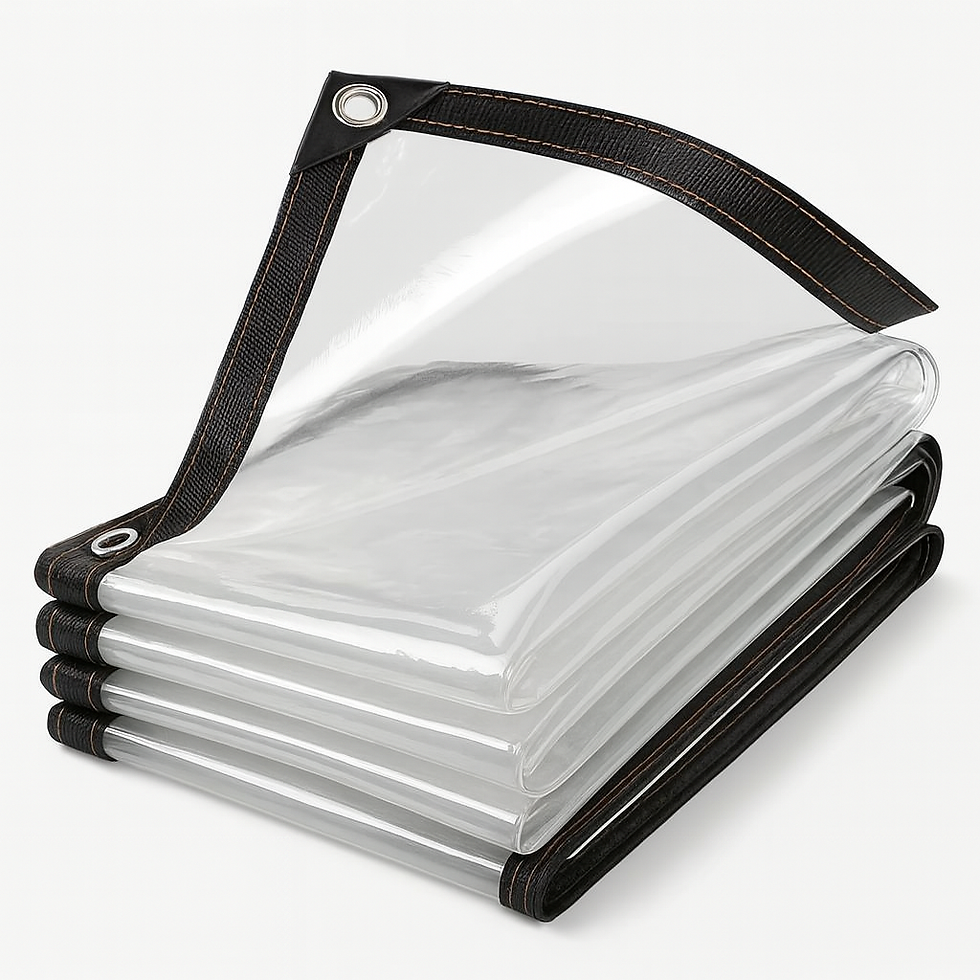The Evolution of Plastic Tarpaulins
- UK Tarps
- May 17, 2024
- 3 min read
Plastic Tarpaulins, generally known by the shorthand of "tarps," are multipurpose tools used in many industries and by homeowners nowadays. However their origins go back to the simple human interactions of family and friends. The first tarps were made from waterproofing canvas or cloth closely secured to the fabric with glue like wax, oil and other sealants. They were big, cumbersome and hence, heavily dependent on shipping and transportation network. Plastics like vinyl and polyethylene were developed in the early to mid 1900s. The manufacturers who created these materials began conducting experiments to see what new uses they could come up for waterproof materials such as tarps.
Vinyl Tarps as The Game Changers
In the 50s tarps from vinyl started gaining popularity because they were cheaper and lighter compared to the heavy canvas tarps coming from nowadays. One of the first vinyl tarps to be mass-produced in history was done by BF Goodrich Company in 1952. Even the first heavy and somewhat stiff vinyl tarps were better than canvas and more affordable. These tarps still served for a good duration. Throughout the 60s and 70s the technology behind the once-rigid vinyl tarps made a big leap with chemical companies creating more flexible vinyl and PVC formulas. One of the wonderful elements of the late 1970s vinyl film is the fact that the vinyl tarps had become thinner and more flexible. This indirectly allowed them to be transported virtually anywhere.
Rise of the Poly Tarp
Back in the early 80s, polyethylene tarps (referred to as poly tarps on the market), which were a perfect substitute for vinyl, were the first to be introduced. Unlike vinyl, poly tarps didn’t have the same flexibility but it was a very durable product that was chemical resistant and economical. As a result of their waterproof features, they are rot-proof and can withstand settings of prolonged sunshine without their quality degrading. Thus poly tarps were popularly used as heavy-duty truck tarps and agricultural tarps.
The innovation of Clear Tarpaulin materials and manufacturing techniques exists right now. Some examples of newer materials employed for the tarp series include polypropylene, which is extremely strong; silicone-coated polyesters which are specifically designed to cater to high-performance needs; and blended fabrics such as vinyl and polyester which form a composite. The current variety of tarps with additional special properties such as fire resistance, tear resistance, and reflecting ability are also available.
Advancements in Tarp Manufacturing
Also, what is worth mentioning, is that the methodologies of manufacturing tarps have advanced at the same rate as the material improvements. Initially, pieces were assembled as they were slipped several times into lines. This could cause these cracks or rips to the seams. Our latest welding techniques that weld electron tarps together into one unit will guarantee their sturdiness and effective waterproofing. In addition to that, there are new fabric-cut machines for minimizing waste and maintaining standard sizes of the tarpaulins coming off the assembly line.
Tarps for the Future
The future, no doubt, will witness more progress in terms of plastic tarp technology. Some areas where we may see improvements include: Some areas where we may see improvements include:
Self-smart and intelligent tarps that have sensors for monitoring conditions or remotely causing actions that involve releasing rainwater.
Production of fabric biodegradable casings from plant-based or recyclable plastics in the bid for environmental sustainability.
Unbelievably stretch and flexible tarps that can tightly cover the round loads such as the hay baskets or the pile of wool.
Tarps integrate solar panels for the supply of electricity or solar thermal collectors to harness thermal energy.
Conclusion
Yet, Tarpaulin, the plastic type of tarps, has evolved so much after more than half a century. These, of course, have started from their predecessors, canvas and wax cloth. As we count down to the next 50 years since the invention of disposable face masks, we are left with a sense of eager anticipation about what other material science and manufacturing breakthroughs will bring in other places for this humble but useful piece of plastic protective sheets.




Comments